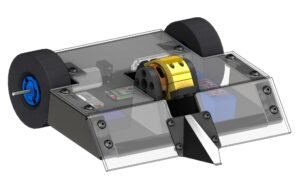As technology becomes more integrated into education, hands-on learning tools like the Line + Obstacle Detection Robot Kit have gained widespread attention. This kit allows users to build a robot that not only follows lines on the ground but also avoids obstacles automatically. As a result, it introduces learners to basic robotics, sensor technology, and coding in an engaging and interactive way. Designed for students, hobbyists, and beginners, it serves as an accessible entry point into the world of automation and electronics.
Key Features
To begin with, the kit includes infrared sensors that allow the robot to detect and follow lines accurately. Moreover, it comes with ultrasonic sensors that help in obstacle detection and avoidance. In addition, motors and wheels are provided for smooth movement across various surfaces. The robot supports programming through platforms such as Arduino IDE, which allows learners to customize its functions easily. In addition, the kit includes a lightweight chassis that offers excellent portability and simplifies the assembly process.
Specifications of Line + Obstacle detection Robot Kit
-
Power source: 4 AA batteries or rechargeable battery pack
-
Sensors: Infrared (line following), Ultrasonic (obstacle detection)
-
Microcontroller: Arduino-compatible (usually included)
-
Programming: Supports Arduino IDE and Scratch
-
Dimensions: Approximately 15 x 10 x 10 cm
-
Weight: Around 250 to 300 grams
-
Components: Motors, wheels, chassis, sensors, microcontroller, jumper wires, screws
Significance of Line + Obstacle detection Robot Kit
In Pakistan, many schools, colleges, and workshops actively use this robot kit to teach robotics, automation, and problem-solving skills. Teachers and parents prefer it due to its affordability and accessibility, while instructors recommend it as an effective tool for introducing students to hands-on STEM learning.
.
Conclusion of Line + Obstacle detection Robot Kit
In conclusion, this Detection Robot Kit combines learning with fun. Because it offers real-time line following and obstacle avoidance, it delivers a complete introduction to robotics. While many similar kits exist, this one stands out for its ease of use, affordability, and educational value. Whether for personal projects, classroom learning, or competitions, it continues to be a trusted choice for beginners and educators alike.







Reviews
There are no reviews yet.